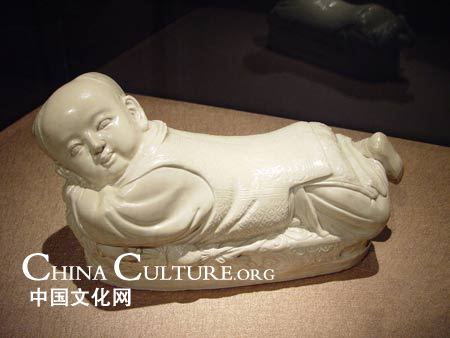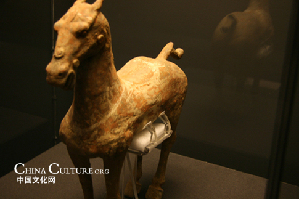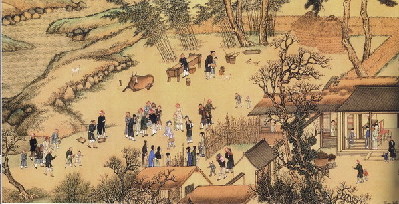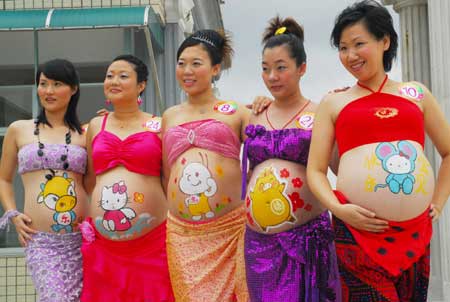| Home > Living in China > Art |
Behind the Changing Masks
Face changing, better known as Bian Lian, is considered one of the most mysterious of China's traditional performing arts. Originally a trick of the Sichuan Opera, only a few Chinese opera masters have been able to grasp the skill.
 |
Zeng Jingui, 70, is one of the few. As he switches his masks in such quick succession, it seems like magic.
Zeng retired in 1990 and since then he has developed a new hobby - making his own masks. So far, he has created more than 1,000 delicate masks in the style of Peking and Xiangju operas, and he displays them in every corner of his home. He spends most of his time rummaging through various markets seeking suitable materials to make new masks. His crafty hands have turned buttons into eyes and nylon ropes into beards.
 |
Stepping into Zeng's home, you will find many different glamorous and colorful masks covering the walls of the living room, most of them homemade. The bulk of these were inspired by the famous characters from The Romance of Three Kingdoms.
A renowned artist and one-time manager of Changsha Xiangju Opera House in Central China's Hunan province, Zeng has devoted himself to mask making and exploring the secrets of mask changing.
 |
"It usually takes one month to make a mask, and it has to be in the summer so the paint can dry quickly," Zeng says. He has even tried to make a mask the size of a bean.
In 2004, Zeng became quite a controversial figure. He triggered a public backlash when he claimed he had successfully decoded the secrets behind Sichuan Opera face changing, an old skill considered to be a confidential national treasure. Many people accused Zeng of tainting this art.
 |
In fact, it was only after hard work, watching piles of videos and repeated testing that Zeng found nylon was the most ideal material to make masks for face changing.
After uncovering the mystery behind face changing, Zeng now looks at it all much more rationally.
"Face changing is only a trick of Sichuan Opera," he says. "Without the rich cultural background behind it, it is only a kid show."
In spite of the controversy, Zeng's success has won him respect from Sichuan Opera masters, such as Peng Denghuai, who is known as the "king of face changing in Sichuan Opera".
Though Zeng is not the world's fastest face-changing artist, he can change up to 10 masks in a show. But he doesn't think the number of masks one can change in a show is the soul of mask changing: "If one only pursues the number, it is hard for audiences to enjoy the beauty of masks."
Opera masks have become the most important part of Zeng's life - even his bed is in the shape of a big mask.
 |
"Life is a dreamlike opera," he says. "I quite enjoy my memories of working on these masks."
Zeng now spends all his energy and time creating a 32-meter-long opera mask, filled with many famous characters from classical Chinese masterpieces such as Outlaws of the Marsh, Journey to the West and The Romance of Three Kingdoms. Zeng hopes his work will make more people aware of this important national treasure so it will live on for generations.
Art
 more
moreClassic Chinese Handicraft:
Porcelain pillows, as classic Chinese handicraft,

Chinese Treasures Returned from
As witness of Chinese culture and custom, countless treasures

The lost legacy: classical music
Accompany by the long history of China, Chinese classical music

Customs
 more
moreChinese Kungfu
Kungfu Taste: Learn Martial Art in Shaolin Temple
The mention of Shaolin Temple conjures up images of a quiet and
Keet Kune Do will reappears on screen: BRUCE Lee and
The Legend of Bruce Lee is shot by China Central Television
The Road to the Olympic Games for Wushu
Wushu, also called kungfu, martial arts, is attracting more and more




 print
print  email
email  Favorite
Favorite  Transtlate
Transtlate 
